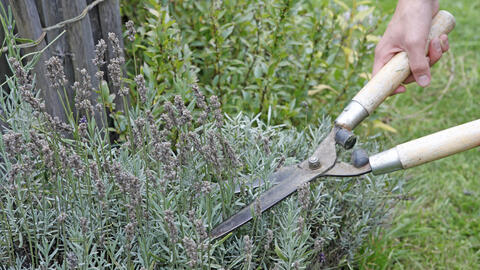Pruning Lavender: The 3 Most Common Mistakes
There are plenty of tips when it comes to pruning lavender. Avoid these mistakes and you’ll enjoy these gorgeously scented plants for a long time to come.

Regular pruning keeps lavender in shape and ensures compact plants laden with flowers – as long as it’s done right
Mediterranean lavender is a true artiste of the drought, enchanting us with its clouds of blue-purple flowers in summer. Many hobby gardeners are uncertain when it comes to pruning lavender: should you even prune this aromatic plant at all? And if so, when and how? We show you the most common mistakes made when pruning lavender – and tell you how to avoid them.
The first mistake would be completely failing to prune the lavender plant. Whether you have potted lavender or plants in your beds, these sub-shrubs age from the base if simply left to grow for multiple years. Over time, they get more and more ragged, failing to flower and looking gradually less attractive. The woody branches do not form new shoots themselves, only reluctantly sprouting new growth after pruning. Therefore, you should take timely action and ensure that your plants remain compact and branch out with regular pruning.
Pruning is important – but it shouldn’t be too drastic. If you cut into the old wood on this sub-shrub, it will rarely sprout any new growth. Whether you prune in spring or summer: make sure that a short section of the previous year’s shoots with a couple of leaves is left. Follow the “one-third-two-thirds method”: after flowering in summer, cut all shoots back by around one third. In spring, prune lavender by two thirds.
You must be careful when selecting a time to prune. If you prune lavender too early on in the year, it may incur frost damage. Only reach for your pruning or garden shears once no more frost can be expected – this may be March or April, depending on your zone. In summer, you shouldn’t wait too long after flowering in July and August to prune: if you cut too late, the new growth cannot mature in time and will be vulnerable to frost damage.



